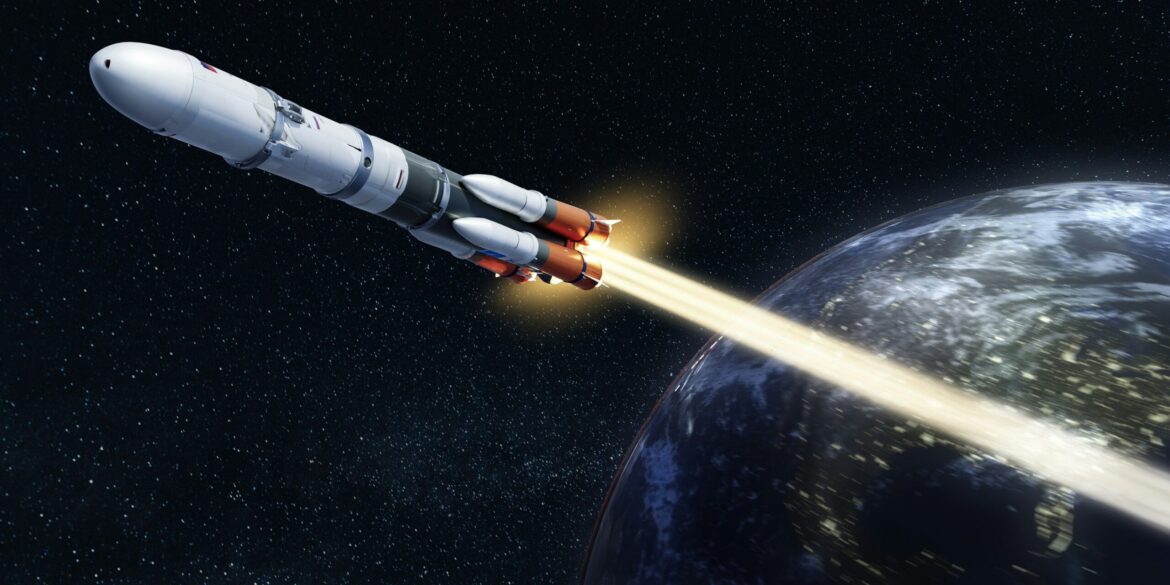On August 21, 2025, the U.S. Space Force successfully launched the eighth mission of its secretive X-37B space plane, sending the robotic orbital test vehicle into low Earth orbit aboard a SpaceX Falcon 9 rocket. The launch took place from Kennedy Space Center in Florida and marked another major step forward in the Pentagon’s efforts to test emerging space technologies that could redefine future military and satellite operations.
Although details surrounding the X-37B program are highly classified, officials have confirmed that this mission—designated OTV-8 or USSF-36—is focused on evaluating two of the most advanced experimental systems ever flown by the United States: a quantum inertial sensor and a next-generation laser communications system. These technologies are intended to operate in the extreme conditions of space, offering insights into their potential for practical deployment in future defense and commercial missions.
The quantum inertial sensor is especially noteworthy. Unlike traditional navigation tools that rely on GPS signals, this sensor uses quantum properties of atoms to detect movement and orientation. If successful, it could enable spacecraft or satellites to navigate independently in environments where GPS is jammed, degraded, or entirely unavailable. This would offer strategic advantages in military operations and space exploration, particularly in contested or signal-denied environments.
Equally significant is the laser communication system onboard the X-37B, which aims to provide high-speed, secure data transmission across vast distances. Traditional radio frequency communication systems face limitations in bandwidth and susceptibility to interference. In contrast, laser-based systems can transmit large amounts of encrypted data at faster rates and with lower likelihood of interception. During this mission, the laser system will be tested for its ability to interface with proliferated commercial satellite networks, such as SpaceX’s Starlink, creating new possibilities for dynamic, global communications in real time.
This marks the first time either of these systems has been tested in space, and their performance could lay the groundwork for a new generation of autonomous, high-performance satellite technologies. Supporting these experiments is a newly enhanced service module, designed to accommodate the larger and more complex payloads required for these advanced trials. The service module allows greater power and data capacity, enabling more ambitious missions than ever before in the program’s history.
The X-37B space plane itself remains one of the most enigmatic vehicles in operation. Originally developed by NASA and later transferred to the Department of Defense, the Boeing-built vehicle functions like a miniaturized, uncrewed space shuttle. It launches vertically and lands horizontally, designed for long-duration missions that can last hundreds of days. Its compact, reusable design allows it to conduct sophisticated experiments while remaining highly maneuverable and cost-effective.
The current mission comes just months after the previous X-37B flight, which concluded on March 7, 2025, after a record-setting 434-day orbital stint. That mission demonstrated significant advances in autonomous flight control, orbital repositioning, and data collection. Each successive flight builds on the last, making the X-37B a cornerstone of the U.S. military’s broader push for space dominance.
This launch also underscores a broader shift in U.S. defense strategy. As rival nations accelerate their own space programs, the United States is increasingly focused on developing systems that ensure operational superiority in orbit. The integration of quantum sensing and laser communications into space platforms reflects a deeper investment in technologies that are not only futuristic, but essential to securing long-term advantage in the domain of space.
In addition to the U.S. Space Force, this mission includes partnerships with the Air Force Rapid Capabilities Office, the Air Force Research Laboratory, and the Defense Innovation Unit. Together, these agencies are helping drive innovation that bridges classified defense projects with cutting-edge commercial research and development.
As the X-37B begins its latest journey through space, the mission offers a glimpse into what may be the future of aerospace technology: highly autonomous, GPS-independent, and capable of communicating vast amounts of data across secure laser links. While the details may remain classified, the implications are clear—this is more than just a test flight. It’s a bold statement about where the future of space and defense is headed.

